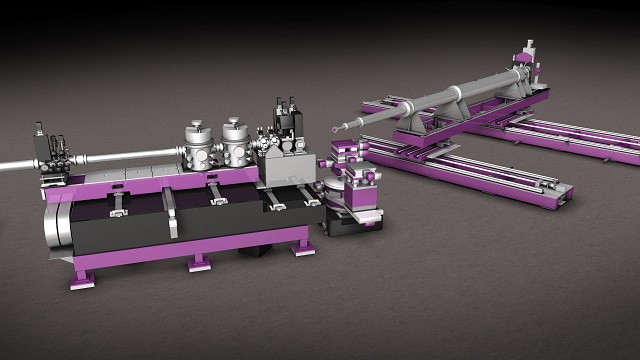 A computerized rendering of the X-ray Correlation Spectroscopy station at SLAC's Linac Coherent Light Source X-ray laser, which was used to study motion in polymer samples. (SLAC National Accelerator Laboratory)
A computerized rendering of the X-ray Correlation Spectroscopy station at SLAC's Linac Coherent Light Source X-ray laser, which was used to study motion in polymer samples. (SLAC National Accelerator Laboratory)
Scientists at the SLAC National Accelerator Laboratory have explained the complex behaviour of polystyrene using its Linac Coherent Light Source (LCLS) X-ray laser. Polystyrene is a widely used polymer, namely in the manufacture of plastic cups and packing foams.
Plastics are made of polymers, which makes them a challenge for scientists to study due to their chainlike strands of thousands of atoms which are intertwined in a complex jumble. Polmers cannot be analysed using common X-ray methods. Knowledge at the molecular level about polymers could help to advance production methods and also create new materials.
SLAC scientists used the LCLS X-ray laser to study polymer samples using a X-ray photon correlation spectroscopy (XPCS) technique. Polystyrene samples were heated to an intermediate gel-like state in between the material’s solid state and its melting point. Nanoscale gold spheres were then implanted in the polymer.
The natural motion in the samples was then measured using the XPCS technique. The minor changes in the relative position of the nanoscale gold spheres were measured by the consecutive "speckle" patterns.
Hyunjung Kim, the lead researcher, stated that they did not know whether the exposure to ultra-bright X-ray laser pulses would affect the sample. However, in this experiment, the sample was not affected as much as expected.
The researchers demonstrated that the sample’s complex dynamics could be studied at slow time scales. In future experiments, the nanoscale gold sphere’s size and arrangement could be changed to allow a better understanding of the material’s motion. This study has been published in Scientific Reports.